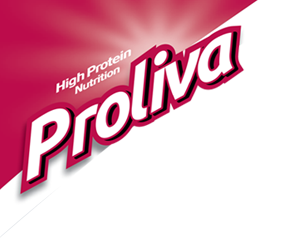-
How much protein? Solving the puzzle
01.04.2019Lately, the world seems obsessed with protein in the diet: protein waters and beverages, the protein-heavy paleo, keto and Atkins diets, and protein-boosted packaged foods from pancake mix to chips. But what exactly does protein do for you? Which sources are the healthiest? How much do you need?
Protein Basics: Proteins are molecules made up of 20-plus building blocks called amino acids. Nine of them you must get from food in order for your body to make the protein it needs to function. These are “essential amino acids”: histidine, isoleucine, leucine, lysine, methionine, phenylalanine, threonine, tryptophan and valine. They’re found in foods such as soy, black beans, nuts, whole grains, fish and poultry.
What Protein Does: Protein that your body makes from amino acids is required for many important processes.
- It is a building block of muscle, bone, skin, hair—and almost every other part of your body.
- It’s used to produce enzymes that power all kinds of chemical reactions, such as what goes on when you digest proteins, fats and carbs so they can be absorbed through your gut and used by your body.
- Some help to turn certain genes on or off, so you can change your family history going forward.
- Some help provide fuel (energy) to your body for stamina during physical activity.
- Protein also helps create hormones, such as insulin, which is needed for regulation of blood sugar levels.
- Finally, proteins help build antibodies that allow your immune system to fight off disease.
But if you have more protein than you need, it becomes a building block of fat cells. One study found that a long-term high-protein diet was associated with weight GAIN when swapped out for healthful carbohydrates (but not when it replaced fat).
Sources of Healthy Protein: When you consume fresh foods, the amino acids/protein you take in comes along with fats and/or carbs, micronutrients, minerals and phytonutrients. Choose the right protein package and you’ll get a health-boosting bounty. The wrong one? Heart disease, some cancers, diabetes and sexual dysfunction. Ouch!
For example, 4 ounces of sockeye salmon serves up 30 grams of protein, about 1 gram saturated fat and a good dose of omega-3s, an anti-inflammatory, heart-friendly fat. A cup of lentils has 18 grams of protein and 15 grams of artery-clearing fiber, with no saturated fat.
On the other hand, one 12-ounce ribeye from a national-chain steakhouse will give you 65 grams of protein along with 890 calories and 68 grams of fat (28 grams is sat fat) and many grams of amino acids that make the bacteria inside your intestines produce inflammatory, and very harmful, substances!
Some high-protein, healthy foods:
- Legumes such as lentils, beans, peas, and peanuts.
- Nuts and seeds, including almonds, walnuts and flax seeds.
- Whole grains, that is, wheat, millet, oats, teff, barley, etc.
- Veggies such as broccoli, asparagus, Brussels sprouts and artichokes.
- All fish, but the best is frozen salmon and sea trout.
- Lean, skinless poultry.
What You Need: There’s a debate about how much protein your body needs or can use. The recommended dietary allowance is just 0.8 grams protein per kilogram of body weight or around 7 grams for every 20 pounds. If you weigh 140, that equals 50 grams per day; 200 pounds equals 70 grams per day.
But some research indicates that “the current RDAs substantially underestimate minimum protein requirements.” And, say the scientists in a 2015 study in Applied Physiology, Nutrition, and Metabolism, “1.5 to 2.2 g/(kg.day) of high-quality protein constitutes a reasonable recommendation for adults as part of a complete diet.” Furthermore, the PROT-AGE Study Group suggested that physically active people over age 65 get at least 1.2 grams of protein per kilogram of body weight. That’s about 105 grams a day for a 150-pound person.
So we’re pro protein for sure, but aim for the healthiest packages of proteins and combine it with a regular routine of physical activity 60 minutes a day five days a week, along with two 30-minute strength building sessions weekly.
Source: http://www.texarkanagazette.com/news/features/story/2019/mar/30/how-much-protein-solving-puzzle/772111/
Latest Blog Post
- Sugary Drinks Linked to a Higher Cancer Risk
- The Latest Research on Protein and Muscle-Building
- 27 Health and Nutrition Tips That Are Actually Evidence-Based
- Tall order: More to good growth in toddlers than just measurements
- Millions of cardiovascular deaths attributed to not eating enough fruits and vegetables

